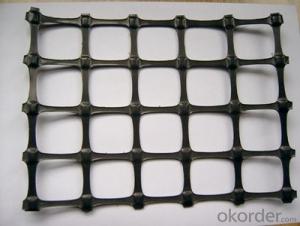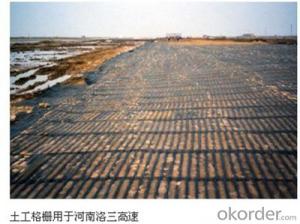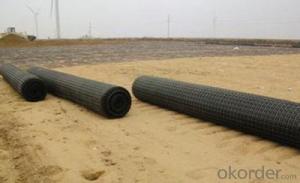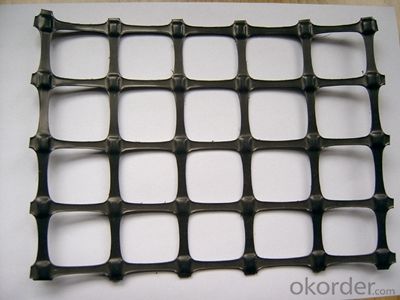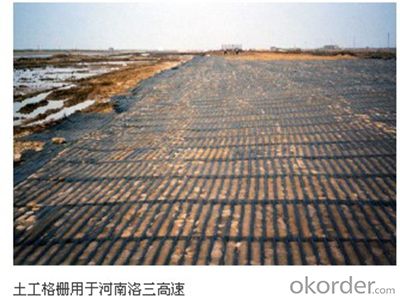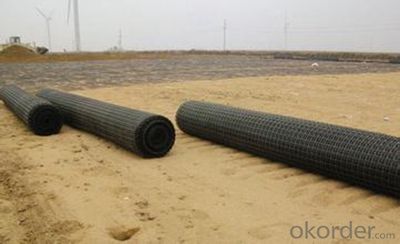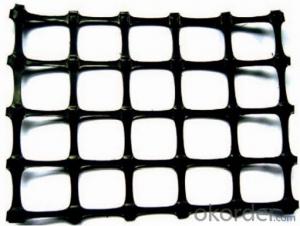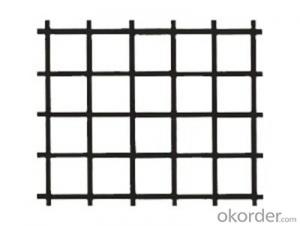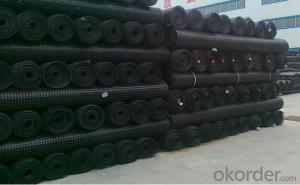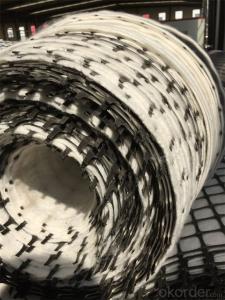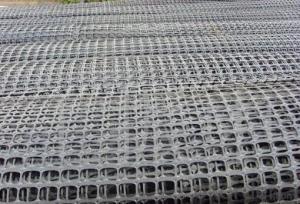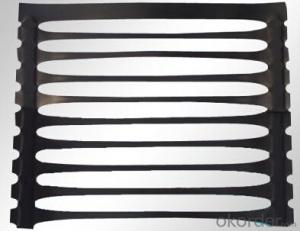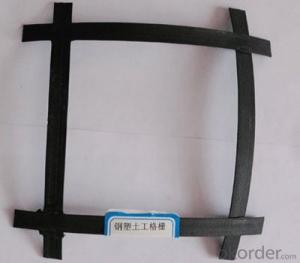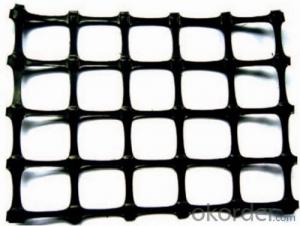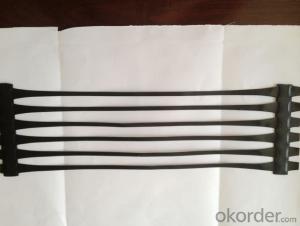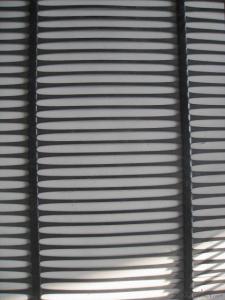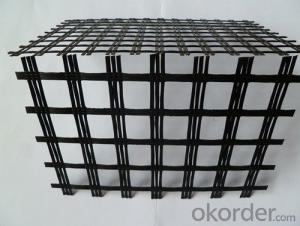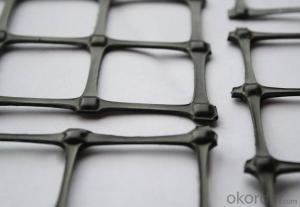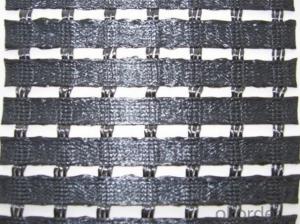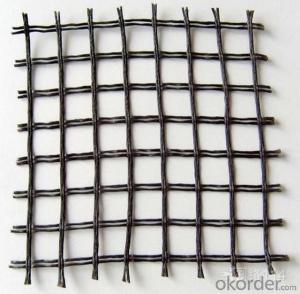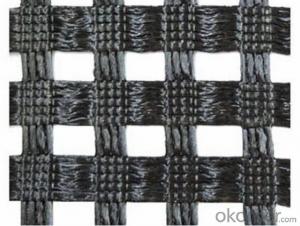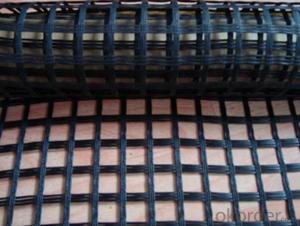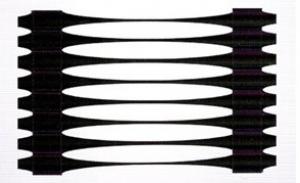HPDE Geocells Biaxial Geogrid for Coal Mine Support
- Loading Port:
- Tianjin
- Payment Terms:
- TT OR LC
- Min Order Qty:
- 88 m²
- Supply Capability:
- 1800000 m²/month
OKorder Service Pledge
OKorder Financial Service
You Might Also Like
Introduction of CNBM
China National Building Materials (Group) Corporation (CNBM) is a state-owned enterprise in charge of administrative affairs in China building materials industry. Established in 1984, CNBM is a large group corporation of building materials with total assets of RMB 25 billion and a total staff of 30,000. Now CNBM owns more than 200 subsidiaries in and abroad the country, including wholly-owned corporations and joint ventures.
FAQ of geosynthetics :
What is geosynthetics ?
Geosynthetics form a perfect erosion control fabric used extremely widely in civil engineering to stabilize and reinforce slopes and soil under or next to roads, railways, dams, water reservoirs etc.. They can be easily applied which minimizes the time of construction, as well as they limit the resources and materials necessary.
What kinds of geosynthetics we have ?
Non-woven geotextile, geogrids, geocells, GCL, Geomembranes, Geonets, Geocomposites etc .
What is the geosynthetics used for ?
Hydraulic
Lagooning and Water Treatment, Ornamental Ponds, Golf Courses
Aquaculture and Desalination,Water Lagoons,Tanks, Reservoirs, Liquid Waste,Floating Cover Solutions, Drainage and Filtration
Environment
Tailing ponds, Leach mining,Landfills,Landfill Capping,Protection against corrosion,Vertical Barriers
Civil Works
Erosion Control,Secondary Containment,Tunnels,Linear and Surface Works,Consolidation of Margins,Soil Reinforcement,Soil Separation.
Building - Parkings,Roofing,Soundproofing
Structure of Biaxial Geogrid ( Biaxial plastix protect-support net used in coal mine ) description :
Double-direction geogrid is made of high molecular polymer through extrusion, forming and punching before longitudinal and lateral stretching. This material has considerable tensile strength in longitudinal and lateral directions. This chain structure can effectively bear and diffuse forces on soil and is applicable to large area permanent load bearing foundation as a reinforce.
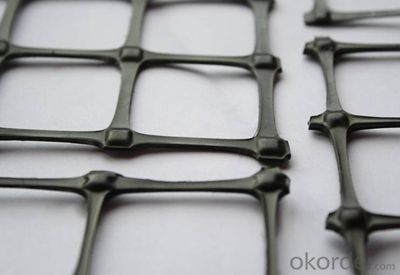
Properties of Biaxial Geogrid ( Biaxial plastix protect-support net used in coal mine ):
Homogenous structure, low creepage ,anti-aging and resisting acid and alkaline.
Application of Biaxial Geogrid ( Biaxial plastix protect-support net used in coal mine ) :
Make reinforce treatment for various of soft soil foundation to evenly distribute load stress and reduce unevensettlement , it is easy to wash coal . used in highway ,railway,port,airport, municipacl and projects of supporting in the recovery working face of coal mined and ladeway in the coal mine .
Specification of Biaxial Geogrid ( Biaxial plastix protect-support net used in coal mine ) :
TGSG15-15,TGSG20-20,TGSG25-25,TGSG30-30,TGSG35-35,TGSG40-40,BP15-15MS,HPP20-20MS, HBPP25-25MS,HBPP30-30MS,HBPP35-35MS,HBPP40-40MS
Width : 1M,2M,3M,4M.
Length: 50m,100,
Color: black
Packaging & Delivery of Biaxial Geogrid ( Biaxial plastix protect-support net used in coal mine ): Each roll is wrapped in a woven bag then into container Or Packed as customers' requests.
Production periods of Biaxial geogrid : within 10 days after receiving the deposit
- Q: Can geogrids be used in soil stabilization for slopes?
- Yes, geogrids can be used in soil stabilization for slopes. Geogrids are commonly used to reinforce and stabilize soil, especially on slopes, by providing tensile strength and preventing soil movement. They can improve the stability of slopes by distributing loads more evenly and reducing the risk of erosion or landslides.
- Q: How do geogrids improve the stability of levees?
- Geogrids improve the stability of levees by providing reinforcement and increased tensile strength. These engineered materials are placed within the levee structure, creating a network of interconnected elements that distribute and withstand the forces exerted on the levee. This helps to prevent slope failure, soil erosion, and potential breaches, ultimately enhancing the overall stability and safety of the levee system.
- Q: What are the quality assurance measures for geogrid installation?
- Some quality assurance measures for geogrid installation include ensuring proper site preparation, accurate placement and alignment of the geogrid, correct tensioning and anchoring, and regular inspection and monitoring of the installation process. Additionally, conducting strength and performance tests on the geogrid and documenting the entire installation process are essential quality assurance measures.
- Q: Anchorage length of Geogrid
- B. on the new cement concrete road surface, glass fiber grid should be placed between semi-rigid base and rigid cement concrete seal.C. on the old asphalt pavement repair, you can use the fuel injection method, anchoring method, self-adhesive method, in the original pavement laying fiberglass grille. Can also be done on the original pavement 20mm-30mm fine asphalt concrete leveling layer, and then laid fiberglass grille, and then paved asphalt concrete surface, the thickness should be 60-100mm.
- Q: Can geogrids be used for load distribution?
- Yes, geogrids can be used for load distribution. Geogrids are commonly used in civil engineering and construction projects to reinforce soil and distribute loads more evenly, reducing the potential for settlement and improving the stability of structures. They are particularly effective in distributing loads over a wider area, thereby reducing the stress on the underlying soil or weak subgrades.
- Q: What is the lifespan of geogrids?
- The lifespan of geogrids can vary depending on several factors such as the quality of the material, installation techniques, and the environmental conditions they are exposed to. However, on average, geogrids are designed to have a lifespan of around 20 to 50 years.
- Q: Can geogrids be used in reinforcement of soil-cement mixtures?
- Yes, geogrids can be used in the reinforcement of soil-cement mixtures. Geogrids are commonly used to improve the strength and stability of soil-cement composites by distributing loads, reducing settlement, and preventing cracking. They enhance the overall performance of soil-cement mixtures and are widely utilized in various civil engineering applications.
- Q: Are geogrids suitable for use in landfill liners?
- Yes, geogrids are suitable for use in landfill liners. Geogrids are often used as reinforcement materials in landfill liners to enhance stability, prevent soil erosion, and improve overall performance. They provide excellent tensile strength and soil confinement, making them an effective solution for reinforcing landfill liners and preventing potential failures.
- Q: Can geogrids be used in reinforcement of mechanically stabilized earth bridge abutments?
- Yes, geogrids can be used in the reinforcement of mechanically stabilized earth bridge abutments. Geogrids are commonly used in geotechnical engineering to enhance the stability and strength of soil structures, such as bridge abutments. They provide tensile strength and distribute loads, improving the overall performance and longevity of the structure.
- Q: How long do geogrids typically last?
- Geogrids typically last for a long time, with a lifespan ranging from 20 to 100 years, depending on factors such as the type of geogrid, installation conditions, and the application it is being used for.
Send your message to us
HPDE Geocells Biaxial Geogrid for Coal Mine Support
- Loading Port:
- Tianjin
- Payment Terms:
- TT OR LC
- Min Order Qty:
- 88 m²
- Supply Capability:
- 1800000 m²/month
OKorder Service Pledge
OKorder Financial Service
Similar products
Hot products
Hot Searches
Related keywords
